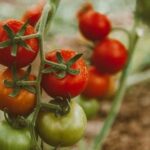Are you looking to start a thriving full sun vegetable garden? With the right knowledge and care, you can enjoy a bountiful harvest of fresh, delicious produce from your own backyard. In this article, we will guide you through the process of creating and maintaining a successful full sun vegetable garden. From choosing the best vegetables for your space to dealing with pests and diseases, we’ve got you covered.
Growing vegetables in full sun has numerous benefits, including increased yields, better flavor, and improved plant health. Whether you’re an experienced gardener or just starting out, understanding the unique needs of full sun gardening is essential for success. By following our tips and recommendations, you can create a thriving full sun vegetable garden that will provide you with an abundance of fresh, nutritious produce.
In the following sections, we’ll explore the best vegetables for full sun gardens, as well as how to choose the right location and prepare the soil for optimal growth. We’ll also share watering and care tips to keep your plants healthy and vibrant throughout the growing season.
Additionally, we’ll discuss strategies for dealing with pests and diseases so that your garden can flourish. Join us as we delve into the world of full sun vegetable gardening and discover how rewarding it can be.
Benefits of Growing Vegetables in Full Sun
The key to a productive and healthy vegetable garden is ensuring that your plants receive an adequate amount of sunlight. Full sun vegetable gardens, in particular, offer numerous benefits for gardeners who are looking to maximize their harvest. With the right planning and care, you can enjoy a bountiful supply of fresh and nutritious produce throughout the growing season.
First and foremost, one of the primary benefits of growing vegetables in full sun is enhanced plant growth and productivity. Most vegetable crops thrive when they receive at least 6-8 hours of direct sunlight each day. This ample sunlight exposure allows plants to undergo photosynthesis more efficiently, resulting in robust growth and higher yields. In fact, most fruiting vegetables such as tomatoes, peppers, and squash require full sun conditions to produce an abundant crop.
In addition to promoting superior plant growth, full sun exposure also contributes to the overall quality of the harvested produce. Vegetables that receive sufficient sunlight tend to develop richer colors, flavors, and nutritional content compared to those grown in shadier conditions. As a result, gardeners can enjoy tastier and more vibrant vegetables from their full sun gardens.
| Benefits | Details |
|---|---|
| Enhanced plant growth | Vegetable crops thrive with at least 6-8 hours of direct sunlight daily. |
| Quality of produce | Sufficient sunlight leads to richer colors, flavors, and nutritional content in vegetables. |
Best Vegetables for Full Sun Gardens
When it comes to creating a successful full sun vegetable garden, choosing the right vegetables is crucial. Not all vegetables are equipped to thrive in the harsh conditions of full sun, so it’s important to select plants that can handle the intensity of direct sunlight. Here are some of the best vegetables to consider for your full sun garden:
Tomatoes
Tomatoes are perhaps the most popular choice for full sun gardens. They thrive in direct sunlight and require at least 6-8 hours of sunshine per day to produce an abundant crop. There are numerous varieties of tomatoes to choose from, including cherry, beefsteak, and heirloom, making them a versatile option for any full sun garden.
Peppers
Another excellent choice for full sun gardens is peppers. Whether you prefer sweet bell peppers or spicy hot peppers, these plants love the heat and sunshine. Peppers also require well-drained soil and consistent watering to thrive in full sun conditions.
Zucchini
Zucchini is a fast-growing and prolific vegetable that thrives in full sun. With their large, impressive leaves, zucchini plants can soak up the sunlight they need to produce an abundance of delicious squash throughout the growing season. Just be sure to give them plenty of space to spread out in your garden.
By choosing the right vegetables for your full sun garden, you can ensure a bountiful harvest and a successful growing season. Experiment with different varieties and find out which plants thrive best in your specific location and climate. With proper care and attention, your full sun vegetable garden can provide you with an abundance of fresh produce all season long.
Choosing the Right Location for Your Full Sun Vegetable Garden
When it comes to creating a full sun vegetable garden, choosing the right location is crucial for the success of your plants. The ideal location for a full sun vegetable garden is one that receives at least 6-8 hours of direct sunlight each day. This means finding a spot in your yard that is not obstructed by trees, buildings, or other structures that may cast shadows over your garden.
Consider Sun Patterns and Shadows
Before planting your full sun vegetable garden, take the time to observe the sun patterns in your yard throughout the day. Note any areas that may be in shadow during certain times and avoid placing your garden in these spots. Additionally, consider any nearby structures or trees that may cast shadows as the seasons change and adjust your garden placement accordingly.
Air Circulation and Drainage
In addition to sunlight, it’s important to consider air circulation and drainage when choosing the right location for your full sun vegetable garden. Good air circulation helps prevent diseases and promotes healthy plant growth, so avoid placing your garden in an area that is surrounded by tall walls or fences. Additionally, ensure that the chosen location has proper drainage to prevent water from pooling around your plants.
Proximity to Water Source
Another factor to consider when choosing the right location for a full sun vegetable garden is its proximity to a water source. Ensure that the chosen spot is within reach of a hose or irrigation system to make watering more convenient and efficient.
By carefully selecting the right location for your full sun vegetable garden, you can set yourself up for success and enjoy a bountiful harvest of fresh vegetables throughout the growing season.
Soil Preparation and Maintenance for Full Sun Gardens
When it comes to creating a successful full sun vegetable garden, preparing the soil is crucial. The right soil will provide the necessary nutrients for your plants to thrive under the intense sunlight. Here are some tips for preparing and maintaining the soil in your full sun vegetable garden:
1. Testing the Soil: Before you start planting, it’s important to test the soil to determine its pH level and nutrient content. You can purchase a soil testing kit at your local garden center or send a sample to a professional lab. Based on the results, you can make any necessary adjustments to ensure that your soil is suitable for growing vegetables in full sun.
2. Adding Organic Matter: Whether you have sandy, clay, or loamy soil, adding organic matter such as compost or well-rotted manure can improve its texture and fertility. Organic matter also helps retain moisture in the soil, which is especially important in full sun gardens where the soil tends to dry out quickly.
3. Mulching: Once your vegetables are planted, applying a layer of mulch around them can help conserve moisture, regulate soil temperature, and suppress weed growth. Organic mulches like straw, wood chips, or shredded leaves are great options for full sun vegetable gardens.
4. Fertilizing: In addition to adding organic matter, you may need to supplement your soil with fertilizer throughout the growing season. Choose a balanced fertilizer specifically formulated for vegetables and follow the manufacturer’s instructions for application.
By following these soil preparation and maintenance guidelines, you can ensure that your full sun vegetable garden has the foundation it needs to yield a bountiful harvest of healthy and delicious produce.
Watering and Care Tips for Full Sun Vegetables
In a full sun vegetable garden, proper watering and care are essential to ensure the health and productivity of your plants. The intense sunlight that these gardens receive can quickly dry out the soil, making it crucial to maintain adequate moisture levels for optimal growth. Here are some important tips to keep in mind when caring for your full sun vegetables.
Firstly, it is important to establish a consistent watering schedule for your full sun vegetable garden. During hot summer months, vegetables may need to be watered daily to prevent wilting and dehydration. It’s best to water your plants in the early morning or evening to minimize evaporation in the heat of the day. Additionally, using drip irrigation or a soaker hose can help deliver water directly to the roots of the plants, ensuring efficient absorption and reducing water waste.
In addition to regular watering, providing proper care for your full sun vegetables includes maintaining a layer of mulch on the soil surface. Mulch helps retain moisture, regulates soil temperature, and suppresses weed growth, all of which contribute to healthier and more productive plants. Organic mulches such as straw, wood chips, or shredded leaves are ideal for full sun vegetable gardens as they also improve soil structure as they break down over time.
Moreover, it’s important to monitor the overall health of your plants in a full sun garden by regularly inspecting them for signs of stress or disease. Keeping an eye out for wilting, yellowing leaves, or pest infestations will allow you to address any issues promptly before they escalate. Proper care and attention will help your full sun vegetables thrive and produce an abundant harvest for you to enjoy.
Dealing With Pests and Diseases in Full Sun Gardens
When it comes to maintaining a thriving full sun vegetable garden, dealing with pests and diseases is a crucial part of the process. Here are some tips and strategies for keeping your garden healthy and free from harmful insects and diseases:
1. Identify common pests and diseases: It’s important to be able to recognize the signs of common pests and diseases that can affect your vegetables in a full sun garden. Some of the most common culprits include aphids, caterpillars, powdery mildew, and blight. By identifying these issues early on, you can take appropriate action to prevent them from spreading.
2. Implement natural pest control methods: Instead of resorting to harsh chemicals, consider using natural pest control methods to protect your full sun vegetables. For example, you can introduce beneficial insects like ladybugs or lacewings to help control aphid populations. Additionally, planting companion plants such as marigolds or basil can repel certain pests.
3. Practice good garden hygiene: One of the best ways to prevent diseases in your full sun vegetable garden is by practicing good garden hygiene. This includes regularly removing dead or diseased foliage, properly spacing plants for adequate air circulation, and rotating crops to prevent soil-borne diseases.
By following these tips for dealing with pests and diseases in your full sun vegetable garden, you can enjoy a bountiful harvest of healthy, delicious produce without the need for harmful chemicals or pesticides.
Harvesting and Enjoying the Fruits of Your Full Sun Garden
When it comes to harvesting and enjoying the fruits of your full sun vegetable garden, there are a few key tips to keep in mind to ensure you get the most out of your hard work. One of the best parts of having a full sun vegetable garden is being able to enjoy the fresh, flavorful produce that you’ve grown yourself.
Once your vegetables are ready for harvest, it’s important to pick them at the right time to ensure they are at their peak flavor and quality. Different vegetables have different indicators that they are ready to be harvested, such as size, color, and texture. For example, tomatoes should be picked when they are fully colored and firm but not hard, while lettuce should be harvested before it bolts and becomes bitter.
Once you’ve harvested your vegetables, it’s time to enjoy the fruits of your labor. Whether you’re cooking up a delicious meal with your freshly picked produce or simply enjoying it raw, there’s nothing quite like the taste of homegrown vegetables. And if you find yourself with an abundance of produce, you can always preserve it by canning, freezing, or drying so that you can continue to enjoy it long after the growing season has ended.
| Full Sun Vegetable | Best Time for Harvest |
|---|---|
| Tomatoes | Fully colored and firm but not hard |
| Lettuce | Harvest before it bolts and becomes bitter |
Conclusion
In conclusion, cultivating a full sun vegetable garden can be an incredibly rewarding experience for any gardener. The abundance of sunlight provides optimal conditions for the growth and development of a wide variety of vegetables, resulting in bountiful harvests and delicious, nutritious produce. By choosing the right location, preparing the soil, providing proper care, and implementing pest management strategies, gardeners can enjoy the fruits of their labor in the form of vibrant, thriving plants.
One of the greatest rewards of maintaining a full sun vegetable garden is the satisfaction of being able to harvest your own fresh produce. There’s nothing quite like picking ripe tomatoes, crisp lettuce, or sweet peppers straight from your own backyard. Not only does it provide a sense of accomplishment, but it also allows for a greater connection to the food you consume. Additionally, homegrown vegetables often boast superior flavor and nutrient content compared to store-bought produce.
Furthermore, reaping the benefits of a successful full sun vegetable garden extends beyond just enjoying the literal fruits and vegetables. Gardening has been shown to have numerous mental and physical health benefits, such as reducing stress, increasing physical activity, and fostering a sense of purpose.
In addition to these personal rewards, tending to a garden can also have positive effects on the environment by promoting biodiversity and sustainable living practices. All in all, a thriving full sun vegetable garden offers far-reaching rewards that extend well beyond just its delicious yield.
Frequently Asked Questions
What Veggies Grow Best in Full Sun?
Vegetables that thrive in full sun include tomatoes, peppers, cucumbers, and zucchini. These plants need at least 6-8 hours of direct sunlight to grow healthy and produce a good yield.
Can Vegetable Garden Get Too Much Sun?
While most vegetables benefit from full sun, it is possible for a vegetable garden to get too much sun. Excessive heat and intense sunlight can cause some vegetables to wilt, dry out, or become stressed. In such cases, providing some shade during the hottest part of the day can help protect the plants.
What Vegetables Do Not Like Full Sun?
Some vegetables prefer partial shade over full sun. These include leafy greens like lettuce, spinach, and kale. While they still need sunlight to grow, they can be sensitive to excessive heat and may bolt or turn bitter if exposed to long hours of intense sun.

If you’re looking to get into vegetable gardening, or are just looking for some tips on how to make your current garden better, then you’ve come to the right place! My name is Ethel and I have been gardening for years. In this blog, I’m going to share with you some of my best tips on how to create a successful vegetable garden.





